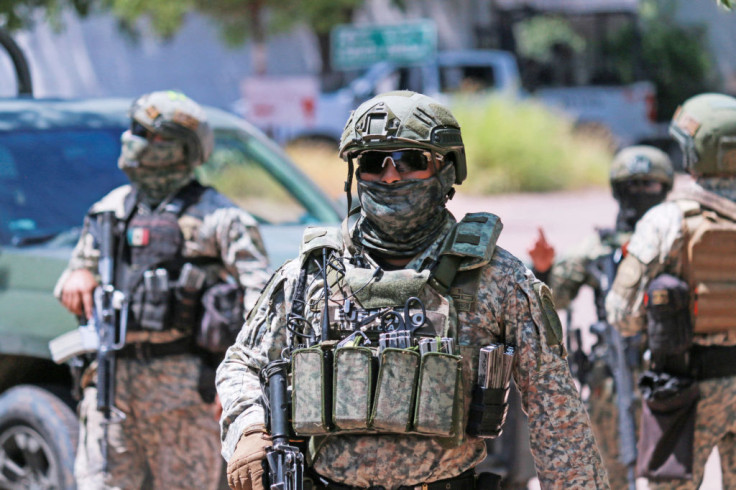
New reports on the cartel war between Los Chapitos and La Mayiza in northern Mexico suggest a major shift inside the Sinaloa Cartel is taking place, as the faction loyal to Ismael "El Mayo" Zambada and his son, Ismael Zambada Sicairos, continues to have the upper hand.
Sources close to the conflict say La Mayiza now controls up to 90 percent of the territory once dominated by Los Chapitos, signaling a possible reconfiguration of the cartel's leadership and internal structure.
According to testimony obtained by Milenio from a former security chief for El Mayo, along with interviews with journalists who specialize in organized crime and sources close to the groups, La Mayiza is now believed to control most of Sinaloa, with a few areas still under dispute.
Those same sources say the new leaders of what was once known as the Sinaloa Cartel (before Joaquín "El Chapo" Guzmán's 2016 arrest) will be Zambada Sicairos, also known as "Mayito Flaco," and Fausto Isidro Meza Flores, alias "Chapo Isidro," a key ally of the Zambada family in its war against Los Chapitos.
As reported by Milenio, Zambada's former security chief said "Los Mayos" were aware that Iván Archivaldo Guzmán, leader of Los Chapitos, was purchasing large quantities of weapons and recruiting more than 2,000 men to launch an offensive against the Zambada faction as the two parted ways. In response, Mayito Flaco began recruiting his own forces, including armed wings led by Chapo Isidro, Los Cabrera, and "El Guano," El Chapo's brother, who switched sides to join La Mayiza.
Since the conflict erupted in Culiacán, Sinaloa, on September 9, 2024, there have been 2,113 homicides and 2,077 reported cases of forced disappearances in the state by October 6 of this year, Noroeste detailed.
Although the violent conflict continues taking new victims each day, a source close to the conflict who spoke with Milenio on condition of anonymity said La Mayiza has already reclaimed up to 90 percent of the territory once controlled by Los Chapitos.
"Los Mayos are sweeping through the cities and surrounding municipalities, wiping out the remaining Chapitos," the source said.
According to the same former security chief, when the war began, La Mayiza began leaking the locations of high-ranking Chapitos operatives. Milenio reports that this is how José Ángel Canobbio Inzunza, also known as "El Güerito," was arrested in February.
Canobbio Inzunza is believed to be Iván Archivaldo's right-hand man and the key figure managing the finances of Los Chapitos. He was one of 29 people extradited by the Mexican government to the United States that same month.
Authorities also believe he was the first to bring chemical precursors from China into Sinaloa, and possibly into the country, to set up labs and begin large-scale fentanyl production.
Ismael Bojórquez, longtime editor of Ríodoce and an expert on organized crime, told Milenio that U.S. agencies are likely behind high-level arrests such as Canobbio Inzunza's.
"We don't have evidence that U.S. agents are physically involved in operations led by Omar García Harfuch (Mexico's top security officer), but we don't doubt they are participating, as they have in the past, especially in major arrests," Bojórquez said. "There's pressure from the U.S. government, and that reinforces the belief that they are operating side by side with Mexican federal forces."
Other sources consulted by Milenio agreed that U.S. cooperation is likely in joint operations with Mexican authorities.
Juan Veledíaz, director of El Sol de Sinaloa, said U.S. agencies may be involved remotely through drone surveillance or other advanced technology.
"We have no proof, we haven't seen them, and we don't have evidence, but based on what we've reviewed in military documents, the use of drones and remote stations makes it easy for them to not be there physically," Veledíaz said. "The technology used by elite military units allows for remote operations."
More than a year into the conflict, Bojórquez said the Chapitos will not disappear even if La Mayiza consolidates its control. Instead, the group is likely to be reshaped under new leadership.
"A decade ago, they operated like allied families—supporting each other, doing business together, even holding family gatherings," he said. "Since El Chapo was captured, that has changed. The cartel's roots run very deep, and whoever wins this war, it will be reshaped but will not disappear."
© 2025 Latin Times. All rights reserved. Do not reproduce without permission.







